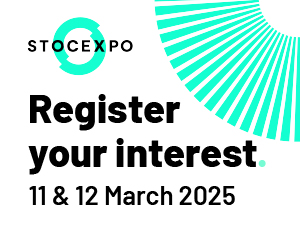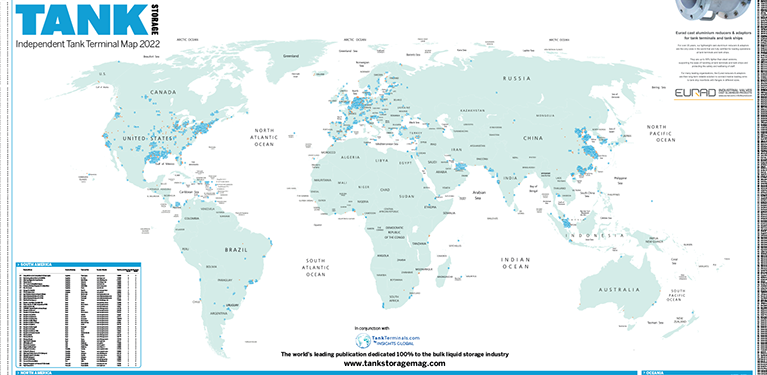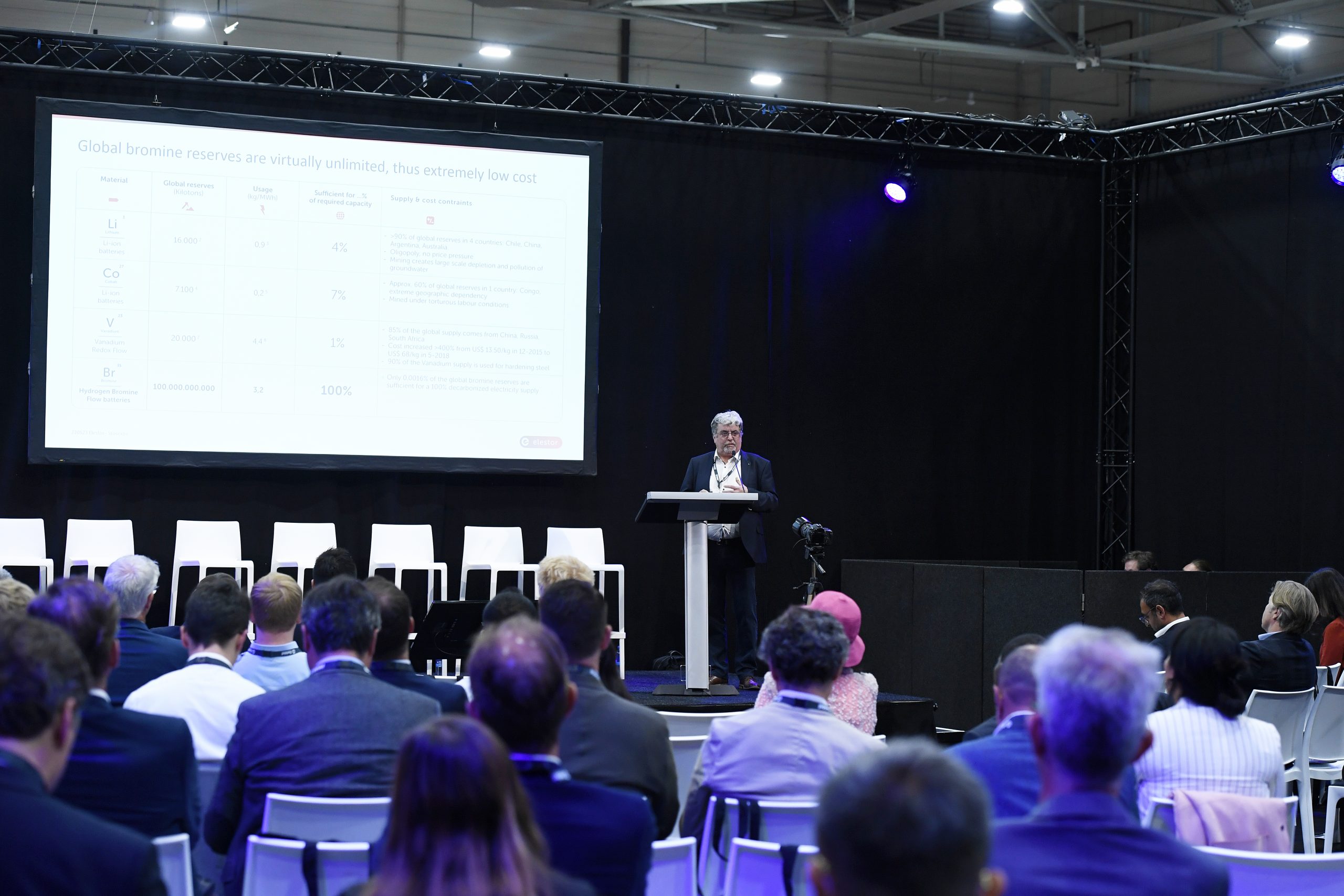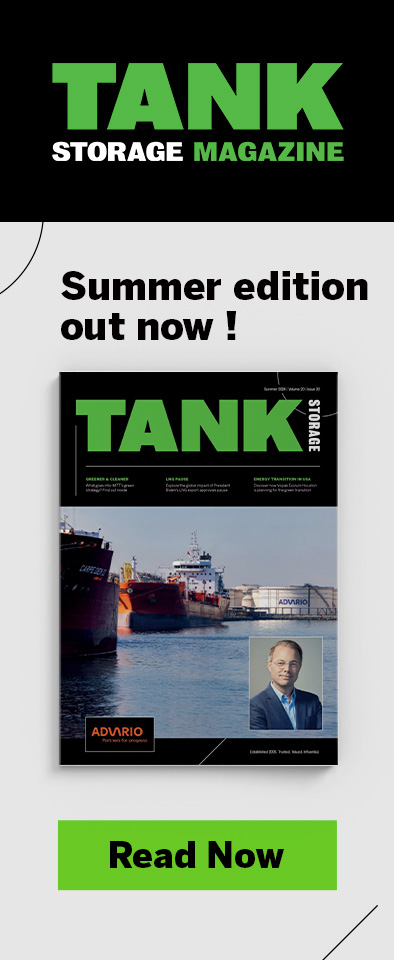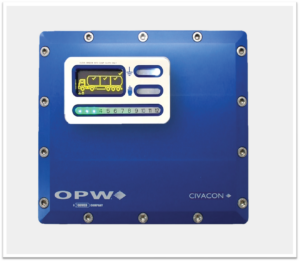The most common comment heard around the show floor at StocExpo 2022 at the Ahoy in Rotterdam, the Netherlands, was how good it was to be back face-to-face, something echoed by many of the speakers in the show’s varied and extensive conference programme.
ALL THE COLOURS OF THE RAINBOW
The first day of the conference focussed on the impact of the energy transition on the storage sector. Blue, green and grey hydrogen were covered and even pink – with Matt Wilson, energy transition manager at Navigator Terminals saying that nuclear-produced hydrogen is now a viable option.
With the energy supply chain crisis of today, it seems nuclear power is now back on the table, with the UK introducing a target of 24 GW of nuclear by 2050 – three times what it is now.
As well as nuclear, the war in Ukraine has created such a demand for energy independence that there has also been a resurgence in coal demand. Coal demand is set to reach unprecedented levels in 2023, but in about 18 months’ time, this is set to subside again, after which the energy transition can really begin.
Mark Waddington, director at Channoil Energy, gave delegates an overview of energy demand by fuel and region to 2030. Whereas Europe and North America are seeing a decline in the use of oil up to 2030, other regions such as Asia and the Middle East are still seeing an increase in demand.
As a result, Waddington does not expect global oil demand to peak before 2030. After 2030, there will be a decline in demand, but not a drastic collapse.
‘Many people thought the pandemic would be the start of the energy transition,’ Waddington explains. ‘But in fact, crude oil demand is almost back where it was in 2019, at 99 million bbl a day.
Giacomo Boati, executive director at IHS Markit, then gave delegates an overview of the differences between the current RED II and the even more ambitious Fit for 55 targets, looking at how these policies will drive the energy transition.
Boati predicted that gasoline and diesel cars will decline drastically. He said that most refined products will decline in the medium term. Chemicals, LPG and naphtha, on the other hand will remain stable for the next 20-30 years.
He also added that sustainable aviation fuel and renewable fuels of non-biological origin (RFNBOs) will be promising fuels in the long term thanks to sustained growth in the aviation sector and a strong policy push.

Throughout the day there was much discussion about hydrogen carriers, with the consensus being that different carriers were suited to different circumstances and all had a role to play. Ramon Ernst, managing director at Evos, for example, spoke about the H2A consortium, which has a goal to import, transship and distribute 1 million tonnes of green hydrogen annually via the Port of Amsterdam in the Netherlands.
Ernst explained that ammonia wouldn’t be suitable for this project, for example as the Port of Amsterdam is so close to residential areas.
Environmental, social and corporate governance (ESG) was another topic that featured heavily, with Berend Paasman, global head of logistics at DNB, explaining that lending is now becoming more dependent on sustainability criteria.
‘There is an increasing scrutiny of fossil fuel-linked assets,’ he explained, and banks are now committed to bringing lending portfolios at least in line with the Paris goals of net zero. Many banks are looking to be actively involved in the energy transition, so there are also plenty new opportunities, he explained.
ESG will also play a role in tank maintenance going forward, with Navigator’s Wilson explaining that terminals are likely to choose their suppliers based on their ESG principles. Gary Kalmin, CEO of HG Storage echoed this sentiment, saying that ESG is now front and centre for all decision-making going forward.
Overall, it was a thought-provoking day. From the sounds of it, large-scale hydrogen projects are still a decade away and costs are still many multiples higher than where they need to be, but partnerships are the key. The speakers agreed that events like this are essential for generating ideas, collaborating, and accelerating sustainable growth.
DIGITALISATION AND ROBOTICS
Following a morning of sessions on Industry 4.0 and the digital transformation, the afternoon conference session was kicked off by Karel Saey, digital transformation manager at North Sea Port. North Sea Port was created relatively recently by the merger of the ports of Vlissingen and Terneuzen in the Netherlands and Ghent in Belgium. It is seeking to create a digital community within the port to enable a digital nervous system to optimise port processes. North Sea Port is also seeking to switch to renewables and energy transition products and services, including CCS, bunkering facilities for alternative fuels such as (bio)LNG and ammonia, and renewables. Commercial manager Peter Geertse said that 3.6 GW of electrolysers for green hydrogen are already being developed in the port.
Second on the bill was Jelle Swanenberg, COO of Smartflow, a software-as-a-service (SAAS) company developing technology to digitalise frontline operations at the terminal. So-called ‘shadow IT’ with common office software tools and localised solutions are difficult to manage, but a global standard could offer economies of scale and the possibility for continuous improvements.
TWTG’s Nadine Herrwerth had an exciting case study to share alongside Shell’s Sophie Winter. Shell has ordered 2,500 new TWTG NEON Vibration Sensors and is currently implementing the technology at its Pernis refinery. Shell engineers worked with TWTG to develop the sensor. On a bigger site like Pernis, the sensors make it easier to check the performance of equipment daily. The partners will roll out the technology across other Shell sites.

Olli-Pekka Melin and Simo Luiro from Distri-Consulting, a distributor of Dearman Systems’ technology in Europe stepped up next, explaining that the company chose Dearman due to its UNITY Server, which allows data to be collected from multiple sites in real time, including from different manufacturers, and shared with a central office, with huge benefits for all.
Ahmed Hadid from Hybird started his presentation with a shocking video of tank collapse and fire. With no accurate, accessible data, this could happen anywhere. Hybird’s Clarity platform begins with a 3D scan of a facility, showing every component onsite, connected to P&IDs, drawings, past repair reports and other crucial data. SCADA feeds and real-time data can also be integrated. Clarity is accessible via mobile phone and tablet. One customer reporter 85% less downtime and savings of US$512,000 dollars at its terminal.
The second afternoon session was hosted by Sprint Robotics. Tjibbe Bouma, the chairman of Sprint Robotics, introduced the organisation, which was founded in 2015 to drive the acceleration of the uptake of robotics for inspection and maintenance purposes. The non-profit organisation has about 100 organisations and companies supporting it and making use of its services. Bouma says that there is a growing momentum within the oil and gas industry for robotic solutions.
Edwin Rosier, sales manager, inspection services at Intero Integrity, looked at the use of robotics for tank bottom in-service cleaning and inspection with Intero’s ATEX Zone 0 Tank Explorer for ultrasonic floor scanning. Inspections conform to API 653 and EEMUA standards.
Peter van Amsterdam, from Baker Hughes, gave a presentation on robotic chime inspection services for tank annular plate services (TAPS) and. Baker Hughes’ guided wave technique for TAPS is modified slightly for better accuracy. The technique is also appropriate for inspecting corrosion under pipe supports (CUPS).
Edwin van der Leden from Eddyfi Technologies explained how non-destructive testing (NDT) techniques can be used in combination with robotics. Efficiency gains are not only from faster scanning, but also the set-up before an inspection (e.g. no scaffolding). For floors, the FloormapX is the best, but Eddyfi uses remotely operated robots and crawlers for tank shell and roof inspections generating a reliable C-scan with a resolution of 1 mm.
Closing the Sprint Robotics session was Duco Boer, CIO of Falcker. Its drone-in-a-box technology scans a tank terminal. The data goes to the Falcker software where it is compared to the digital twin. Any issues can be spotted quickly and programmes developed to repair defects and problems. As of April 2022, Falcker now has full beyond visual line of site (BVLOS) permits to fly throughout Europe. An operator can remotely turn on the drone which flies the mission on its software and returns to its box.
THE FUTURE OF THE INDUSTRY
Advario’s Douglas van der Wiel kicked off day three of the conference with a talk on Oiltanking’s transformation (which you can read about on p45 of Tank Storage Magazine April/May 2022). Catherine Gras from Storengy then discussed large-scale hydrogen storage (see Tank Storage Magazine June/July 2022 p52 for a detailed article from Gras on this topic), and Didier Wesoly from Geostock explained the four main hydrogen storage techniques – salt caverns, porous rocks, lined rock caverns and in an energy carrier in lined rocked caverns (see Tank Storage Magazine June/July 2022 p50).
Next up, Oleksandr Siromakha, head of sustainable fuels at Mabanaft, and Claudia Hain, CEO of Nacompex, gave a joint presentation on handling the products of the future, including advanced biofuels, synthetic e-fuels and hydrogen and its derivatives, looking at storage and transportation. Hain ran through a new closed-loop system being developed by Nacompex, Feredox, to store renewable energy, into which Mabanaft has invested as part of its sustainable fuels strategy. Excess renewable energy is used for electrolysis to produce hydrogen, which can be stored in a chemical process with an iron-based catalyst for safe storage and efficient recovery.
Developing a green hydrogen network for mobility in Spain was the topic chosen by Andres Suarez, global strategy and innovation lead at Exolum, and Jacobo Rogojo from Naturgy. The two companies are involved in the Win4Hydrogen Alliance, which plans to offer a complete service for Spanish customers from production of green power, electrolysis, storage, purification, compression and distribution of hydrogen through to refilling stations. The Alliance will address some of the major barriers, including the cost of hydrogen, the cost of cars, and supply challenges. Initially, the Alliance will have 50 stations in Spain, before extending into France and then into the rest of Europe. The partners hope for a final investment decision by the end of 2022.
Dr Oscar Kraan from Deloitte gave a presentation on navigating the future of hydrogen. Kraan believes that it will play a big role as we seek to decarbonise the planet, but it is only part of the solution. Reducing overall demand is also vital. Hydrogen has been discussed as a fuel since the 1960s but was first mentioned by Jules Verne. It is now taking off for a variety of reasons, including a government push, greater focus on hard-to-abate sectors that need to burn high-temperature fuels or use hydrogen as a feedstock, and surplus renewable energy which can be used to produce hydrogen.
Green hydrogen is currently competitive with grey hydrogen in the Netherlands but this is largely down to high natural gas prices. In future blue hydrogen will play a role but still natural gas dependent and the subsidies come from CCS plans. The market is likely to be very tight and there will be a need to import hydrogen, either by ship or pipeline, as well as produce it. Many players are waiting on each other because there is so much uncertainty in the market over customers, demand, technical standards, regulatory uncertainty, and infrastructure uncertainty, Kraan said, adding: ‘Subsidy mechanisms should be adjusted to ensure supply arrives simultaneously with demand.’
Oistein Jensen, chief sustainability officer at Odfjell discussed the company’s sustainability drivers. The Intergovernmental Panel on Climate Change (IPCC) reports show a clear correlation between human activity, the rise in CO2 in the atmosphere, and rising global temperatures. The company operates 100 chemical vessels transporting some of the most hazardous materials in the world through some of the most sensitive environments in the world while it also wants to grow its terminal business in the most environmentally friendly way it can. Jensen wrote about this topic in depth for Tank Storage Magazine’s June/July 2022 issue. See p54.
Vital to a company’s overall environmental performance is being able to monitor and reduce fugitive emissions. Martin Flink from Emerson ran through some causes and a number of options, such as padding and depadding valves, using outside air can to control pressure in a tank, and pressure vacuum relief valves, weight loaded valves which can vent or suck in depending on pressure. Emerson’s is is guaranteed to by fully open at 10% overpressure, minimising risk. Pilot-operated relief valves use the process pressure rather than weight, which ensures no leakage. Some breather valves also have a flame arrestor to protect a tank, while some tanks also have an emergency relief valve. There are also emergency inbreather valves.
A lively panel discussion with many of the morning’s speakers, entitled ‘A changing storage landscape: What does the future hold?’, closed the morning session. Exolum CEO Jorge Lanza believes there are many opportunities, with feedstocks, pre-treatment of raw materials, blending and hydrogen.

Gras, meanwhile, pointed out that while so much focus is on the products for the energy transition, what’s missing is the renewable electricity behind the production.
Another challenge is finding sufficient storage for new products, with Wesoly saying that building the big infrastructure must start now, and Gras saying that countries need mechanisms in place to manage hydrogen storage for countries without sufficient storage access, similar to what already happens for natural gas.
‘One of the limiting factors is lack of legislation,’ said Flink. ‘We were all waiting for the EU legislation to define when hydrogen is considered to be green and we were promised that at the end of 2021. The draft has just come out, so we can finally start planning our projects, but we cannot invest in projects or commit to offtake because we don’t know the requirements of the legal side. It’s a chicken and egg problem. We need to try to put pressure on the politics to move faster.’
Earl Crochet, owner of Crochet Midstream Consulting, launched the afternoon session with a presentation on the changes to API 2350 – overfill protection for storage tanks in petroleum facilities (see Tank Storage Magazine February/March 2022 p80).
The final session of day three saw six female leaders in the tank storage sector come together to discuss the ongoing issue of how to increase diversity within the industry.
Chaired by Tess Zhou from Global PMI Partners, the panellists included Sandra de Bont, director of VOTOB, Sandra De Mey, commercial manager at North Sea Port, Kathryn Clay, president at ILTA, Karine Huysmans, transformation manager at LBC Tank Terminals, Sanneke van der Kley, programme director at Koole Terminals and Margaret Dunn, publisher at Tank Storage Magazine.
Clay kicked off the session by revealing that many studies have found that companies’ earnings are consistently higher when there is a strong female presence on the board of directors.
The key benefit here is not necessarily the presence of females, but the different perspectives that they bring. It is the diversity of thought that is important – this is what will help companies think and act differently. Clay also emphasised the importance of role models.
‘When it comes to inspiring the next generation of talent, seeing someone that looks similar to you is going to inspire you to think that you can become a future leader,’ she explained.
The panel then agreed that a token employee is not enough and De Bont shared an interesting case study of a terminal in South Africa which only has female terminal operators. Huysmans then relayed her own tale of when she worked as an HSSE manager in a previous role.
‘We noticed a new female operator was involved in a lot of incidents,’ she explained. ‘One day she was involved in a more serious incident with product contamination. That was when we found out that the men in the company were opening valves for her and fixing things for her so she wasn’t learning how to do it herself. People were unintentionally treating her differently as she was female and this was a lesson we learnt from.’
When discussing new ways to attract more females into the sector, the panel concluded that the energy transition was likely to have a positive impact. As terminals focus more on sustainability and ESG compliance this will make the sector more appealing to the next generation of talent.
When the panel discussion finished, the conversation was far from over, so expect to hear more from the ‘Women in Tanks’ over the next few months.
SAVE THE DATE
StocExpo will be back again in 2023, with a busy exhibition floor and another packed conference programme, fron 14-16 March. Save the date!
For more information:

